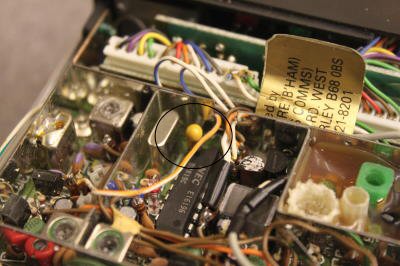I'd bought my FT290 through ebay. It was described as "in good condition for age". The seller must have known it had a serious problem with the PLL synthesiser, but chose not to mention that in the description. Oh well: Caveat Emptor.
At power up, the radio behaved OK. But after warming up for 10-15 minutes, it suddenly jumped in frequency. It was around 10KHz off in frequency, and warbled when a constant frequency input was present. I'd also independently discovered that SSB TX audio was badly distorted, so I would need to go through the alignment process.
The first step in the alignment process is PLL alignment. The steps bring all the tuned circuits onto the right frequency: but that didn't cure the frequency error or the warble. When I teact the Intermediate exam syllabus I teach that a digital synthesiser is either on the right frequency, or on a grossly different frequency. This was different: it was about one synthesiser step out. (The synthesiser itself steps in 10KHz steps. For finer tuning, a D-A converter driven by the microprocessor sets a tuning voltage that, via a varicap diode, "pulls" the reference crystal oscillator). My FT290 synthesiser was nearly on the right frequency: so off to the web.
I found on the web that there is a known problem with electrolytic capacitors failing in old FT290s; and John G8MNY had fixed a problem in his FT290 where the synthesiser PLL decoupling capacitor C3055 had failed. http://skywaves.demon.co.uk/technical/Modifications/FT290_690_790_mk1_PLL_fault.pdf That could certainly cause the IC to mis-count, so I added a replacement 10uF tantalum capacitor from pin 1 to ground. Mine is soldered on the component side to the IC leg, and the ground end is soldered to the PLL screening box. Straightaway, the problem was fixed and the PLL alignment could then be completed. Now there is a clear, stable single tone on SSB for a constant frequency input.

